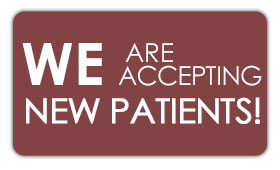The word arthritis means “joint inflammation” and the condition often causes pain and swelling in the joints of the body affected by it. Osteoarthritis occurs when the smooth, rubbery cartilage breaks down, due to inflammation and/or injury to a joint. The causes of osteoarthritis in the hip are not known, but factors that may contribute include; joint injury, increasing age, the hip not forming properly as a child, genetic (inherited) defects in the cartilage and/or extra stress on the joint, either by being overweight or through activities that involve the hip. A majority of cartilage in the body does not regrow after the original cartilage has been damaged, making it important to protect the cartilage you have. Unfortunately, when people hear they have hip arthritis, they fear they are destined to either having surgery or suffer with chronic pain. Although there is not a “cure” for arthritis, much can be done to control hip arthritis pain.
The changes that occur in hip arthritis usually occur slowly, over many years. The two main types of osteoarthritis are: 1) Primary: More generalized osteoarthritis that affects the fingers, thumbs, spine, hips, and knees. 2) Secondary: Osteoarthritis that occurs after injury or inflammation in a joint, or as a result of another condition that may affect the composition of the cartilage.
Symptoms of hip arthritis follow a typical pattern of pain and limitation of movement. The most common location of hip arthritis pain is the groin region/front of the hip. Often patients complain of a “pinching” sensation in the groin, especially when the hip is flexed (bent knee is brought up toward the chest). Pain is generally described as a sharp ache or a burning sensation in the associated muscles and tendons. Arthritis can cause a crackling noise (called “crepitus”) when the arthritic joint is moved or touched and people may experience muscle spasms and contractions in the tendons. Occasionally, the joints may also be filled with fluid. Some patients report increased pain associated with cold temperature, high humidity, and/or a drop in barometric pressure, but studies have had mixed results. Another common referral area of pain, surprises people; it’s the inside area of the knee. Many times people can experience no hip pain at all; rather the hip arthritis only causes the inside aspect of the knee to hurt.
When patients come to the office with hip joint pain related to arthritis, they often complain of the following problems: difficulty getting socks and shoes on/off, difficulty getting in/out of the car, walking, standing, and stair climbing and difficulty with moving from sitting to standing. Some patients gait pattern changes, secondary to pain. If you do have a limp, most often it will feel like you are ‘waddling’ when you walk.
Treatment of arthritis in the hip is similar to many joint pain conditions. Treatment goals include first, reduce inflammation, second, restore range of motion, and third restore strength and function. With osteoarthritis treatment, anti-inflammatory medications may help in reducing joint inflammation (consult your doctor regarding medications). In a research study, 83% of hip osteoarthritis patients improved within nine visits to a chiropractor. If conservative treatment is not effective, cortisone injections may be suggested. Utilizing ice therapy (no heat!) can also be helpful in reducing pain and inflammation. Apply ice for 20 minutes an hour, a few times a day. Weight reduction can be a key aspect to reducing joint stress. Although losing weight alone will not change the joint from being arthritic, decreasing stress on the joint will help to reduce pain. Reducing joint stress can also be achieved through use of an assistive device such as a cane with walking. When using a cane, be sure to use the cane on the opposite side of the painful hip (example: left hip pain, use cane in right hand). Finally, good shoes can be extremely helpful in minimizing joint stress. Supportive shoes can help to absorb force and minimize extra forces directed to the hip. I often recommend a good pair of running shoes as the best way to help minimize ground reaction forces that can be passed on to the hip.

 I grew up in Dayton, Ohio and completed my chiropractic education at Logan College of Chiropractic in St. Louis Missouri. After graduating chiropractic school I moved to Nashville. I have practiced in Nashville for 10 years and Nolensville for over 7 years. I enjoy spending time with my family, dogs, golfing, kayaking, watching college sports and being an active member of the Nolensville community and serving its health needs.
I grew up in Dayton, Ohio and completed my chiropractic education at Logan College of Chiropractic in St. Louis Missouri. After graduating chiropractic school I moved to Nashville. I have practiced in Nashville for 10 years and Nolensville for over 7 years. I enjoy spending time with my family, dogs, golfing, kayaking, watching college sports and being an active member of the Nolensville community and serving its health needs.